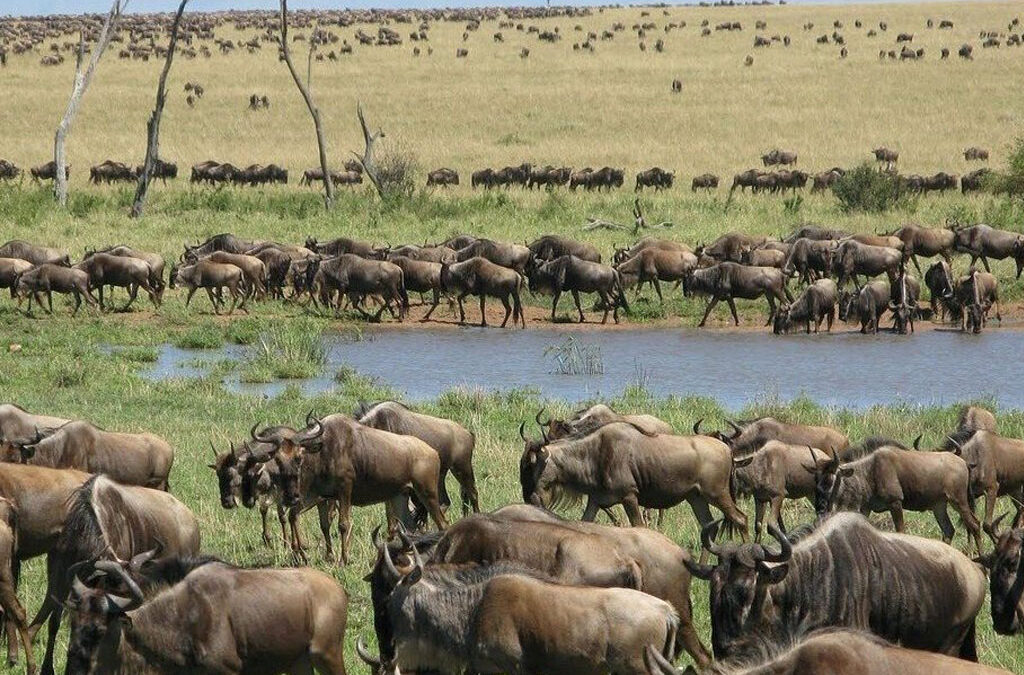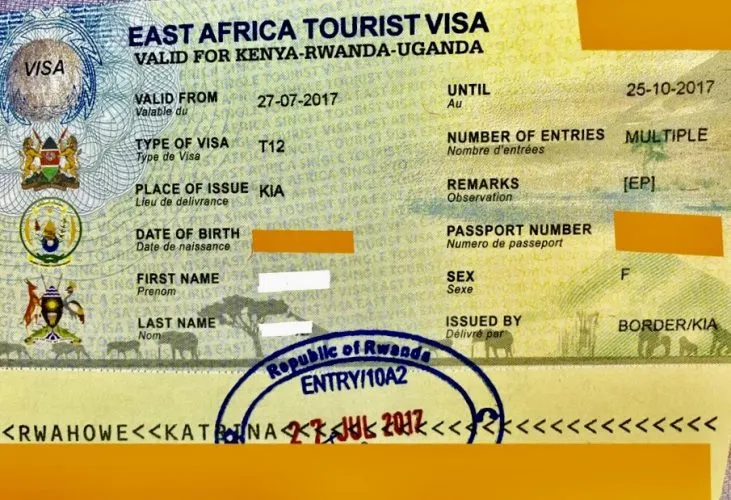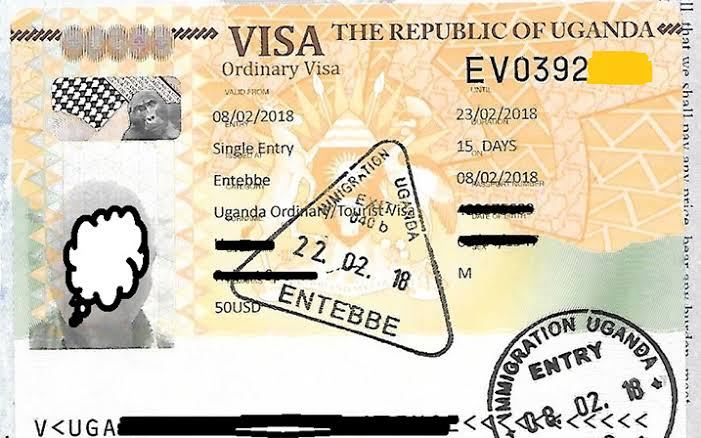
What’s the Best Month for Serengeti?
May 5, 2025
Why Is Zanzibar Better Than Mombasa?
May 5, 2025Can You See the Great Migration Cheaply?
There are few things in life that truly stir the soul standing in front of something so vast, so alive, that you feel small in the most beautiful way. That’s exactly how it feels to witness the Great Migration in East Africa. Over a million wildebeest, zebra, and gazelle thundering across the Serengeti-Mara ecosystem in search of greener pastures, following a rhythm dictated not by humans, but by the seasons, the rains, and the ancient pulse of the earth.
For many, this awe-inspiring spectacle sits high on their bucket list. But when people imagine it, they often think of $10,000 luxury safaris, champagne in canvas tents, and exclusive game drives. And yes those options exist. But here is the truth that doesn’t get said enough:
You absolutely can see the Great Migration cheaply.
I did it. And it was one of the most rewarding travel experiences of my life.
Let me show you how.
Understanding the Great Migration: Timing Is Everything
First things first to do this trip affordably, you have to understand when and where to go.
The Great Migration isn’t a one-time event; it’s an ongoing cycle throughout the year. Here’s a simple breakdown:
-
December to March Calving season in the southern Serengeti, Tanzania.
-
April to June Herds move northwest through the Serengeti.
-
July to October River crossings at the Mara River, northern Serengeti/Kenya’s Masai Mara.
-
November They begin moving south again.
Each season offers a different experience. The famed Mara River crossings (July-October) are thrilling but also the busiest and priciest time to visit. If your goal is to see the migration cheaply, aim for the shoulder seasons late May/early June in the Serengeti or early November when prices dip and crowds thin.
I went in early June, just as the wildebeest were beginning their climb north. And yes it was magical.
Where to Go: Tanzania or Kenya?
Both countries offer amazing access to the migration, but Tanzania tends to be more budget-friendly especially around the Serengeti and Ngorongoro Crater. Park fees are lower, and there’s a wider range of mid- and low-budget options.
If you are after the river crossings specifically, Kenya’s Masai Mara is your best bet, and you can still do it affordably with smart planning (more on that below). But for the most part, I recommend Tanzania for shoestring travelers.
Budget Travel Tips: How I Did It for Under $1,200
Yes, under $1,200 including flights within Africa. Here’s how I pulled it off:
1. Skip the Luxury Lodges Camp Instead
Many budget safaris offer “tented camping” options inside or just outside the parks. These aren’t five-star tents, but they are clean, come with beds, mosquito nets, and often a private bathroom. Meals are included, and you’re still right in the action. I heard lions roar at night while bundled in my sleeping bag unforgettable.
Price range: $40 “$80 per night, including meals.
2. Book a Group Safari (Not Private)
Going solo? Join a group safari it slashes your costs dramatically. I joined a 4-day safari in Tanzania (Lake Manyara, Serengeti, and Ngorongoro) for about $600, all-inclusive. Transport, park fees, guide, meals, and accommodation were covered.
I booked this in Arusha, not online. Booking on the ground almost always saves money just be ready to negotiate and shop around.
3. Use Local Transport Where Possible
To get from Nairobi to Arusha (where most Tanzanian safaris start), I took a $25 shuttle bus. It wasn’t glamorous, but it was safe and scenic. Inside cities, shared minivans or dalla-dallas cost less than $1 a ride.
Flights within East Africa can be pricey, but budget carriers like Precision Air, Jambojet, and Air Tanzania sometimes offer good deals if you book early.
4. Travel in the Shoulder Season
As I mentioned, June was ideal. I got decent weather, plenty of wildlife (including the migration herds), and way better prices. Also, no traffic jams around sightings a real problem during peak months.
What You Actually See (And Feel)
It’s 6 AM. The grasslands are silver with dew. You are wrapped in a blanket, sipping instant coffee by the fire. Then you hear its a low rumble. You hop into the Land Cruiser, and within minutes, you are face to face with thousands yes, thousands of wildebeest stretching to the horizon.
They grunt, pace, and move like a living river. Calves stumble behind mothers. Zebra whinny nearby, as if herding the herd itself.
Then a lioness appears. Your guide whispers, She’s hunting.
You don’t breathe. No one does. It’s wild and raw, but also deeply peaceful. There is no glass screen, no narrator. Just you, your heartbeat, and nature in its most honest form.
That feeling? You can’t put a price on it.
Hidden Costs to Watch For
Budget travel doesn’t mean careless travel. Here are some costs that can sneak up:
-
Park entry fees: These vary by park and country. Serengeti, for instance, is about $60/day. Always check what’s included in your safari package.
-
Tips: Guides and cooks rely on tips. Budget $5 10 per day for your driver-guide.
-
Visa fees: Both Kenya and Tanzania charge around $50 for a tourist visa.
-
Travel insurance: Don’t skip it. Things happen in the bush.
All told, my full 7-day East Africa trip cost me around $1,180, including transport, accommodation, safari, food, and incidentals.
Is It Safe?
Yes with common sense. Stick to reputable tour companies (even budget ones), don’t flash valuables, and respect wildlife boundaries. I traveled solo, as a woman, and never once felt unsafe.
Just avoid walking around cities at night alone and always ask your lodge or guide about current local advice.
Final Thoughts: Why You Should Go
Here is the thing. You can see photos. Watch documentaries. Scroll endlessly on social media.
But nothing compares to being there.
Feeling the earth vibrate under hoofbeats. Watching a cheetah stretch lazily on a rock. Hearing Maasai warriors share stories under stars that stretch forever.
You don’t need $10,000. You need curiosity, flexibility, and the will to chase adventure even if it means sleeping in a tent and eating beans and rice three days in a row.
And when you see that first wildebeest leap across the river water spraying, crocodiles lurking you’ll forget every small sacrifice you made to get there.




